 --device_0
--device_0
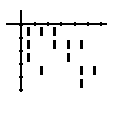
- Hardware
- associative memory using resistance network
- Interpretation
- locations ("contexts" and "details") and structural events (ordered pairs of contexts and details)
- Commands
- steps that count links in forward or reverse
- Problems
- cases, keywords and keynumbers in legal research
 --device_1
--device_1
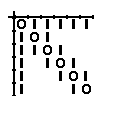
- Hardware
- diagonal access to data; switch bank that holds and transfers results
- Interpretation
- Unifying contexts and details
- Commands
- exploring and organizing structures from within
- Problems
- thesaurus, clusters of references in legal materials, database search tools
 --device_2
--device_2
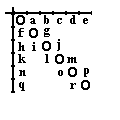
- Hardware
- a network involving two device_0 and/or device_1 systems, two switch banks and transfers between devices and switch banks
- Interpretation
- structural events become locations
- Commands
- organizing and controlling structures through forms
- Problems
- website design, language representation, stored programs
 --device_3 (matters for further investigation)
--device_3 (matters for further investigation)
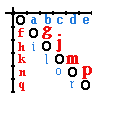
- Hardware
- interwoven negative (inhibitory) system; variations in connection strengths
- Interpretation
- exclusions; differentials (e.g., rating on a scale 1 to 7); covariance and co-ordination
- Commands
- organizing and controlling structures through variations in device operation
- Problems
- cluster problems; reciprocal and interactive imagery
 --device_4 (anticipations and speculations)
--device_4 (anticipations and speculations)
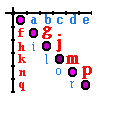
- Hardware
- replace clocked steps with separate pulsing emitters and command structure that calculates activity based on device history
- Interpretation
- locations become foci of activity that collectively excite and inhibit each other
- Commands
- measuring and controlling stabilization parameters; interfaces
- Problems
- spaces; activity-based schemata; robotics






In contrast to other approaches:
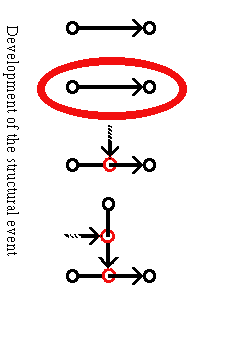
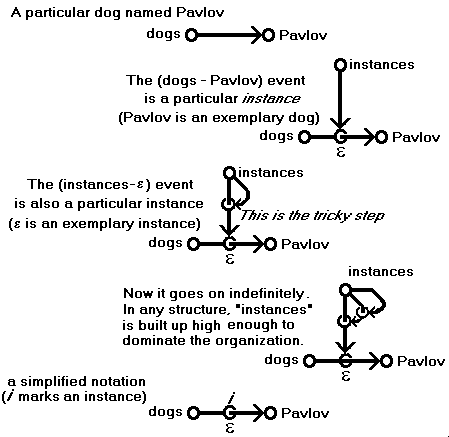 Instance relations follow from the extension.
Instance relations follow from the extension.
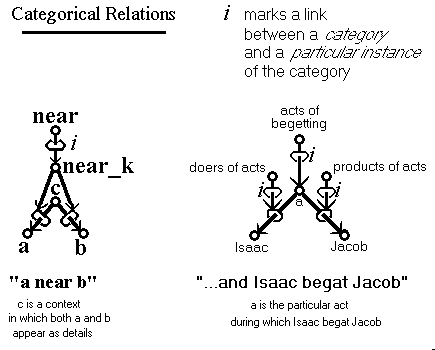 Applications to language representation
Applications to language representation
Relations."A linguistic relation between two expressions x and y is defined, for instance, by a statement of the type 'the attribute R of object x is y' ... Sometimes a notationis used for the simplest type of relation which is then read 'x is related to y by R'. In this case x and R consist of finite sets of discrete values (words or clauses) so that if the format of this statement is fixed, symbolically it is defined by an ordered triple (R, x, y). Variables in the ordered triple are often given the particular meanings A = 'attribute', O = 'object', and V = 'value'. An expression (A, O, V) is then read 'the A of O is V'. ...
On the Interpretation of Relations as Associations. Are the relations and associations one and the same thing? The question needs closer examination. Consider the following types of claims that occur in the literature [references omitted]: 'An association is a two termed relation, involving three symbols, one of which names the relation, the other two arguments'; 'a relation consists of three components, an ordered pair of items and a link which specifies the type of association which relates items'; and 'an association is an ordered triple (A, O, V) of items ... called the components of the association'. What has been said above is essentially that a relation
is thought to link the terms O and V, or that all components in a triple (A, O, V) are mutually linked. Apparently A cannot be understood as a simple link because it contains the representation for a label; a more expedient view might be that all elements A, O, V that have been stored together in this specific order are associated. " (emphasis added)
Relations based on the extension illustrated above are clearly different from the relational notations described by Prof. Kohonen.
Another perspective on the originality claim: Mathematical note to Device_2
Return to top of this page



